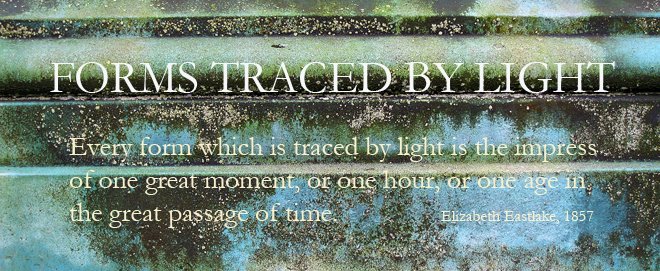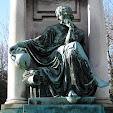Stephen Shore has a brief piece in this month's Aperture, in which he talks, among other things, about photographing Los Angeles in the early/mid seventies, and in particular about "the jumble, the signage, the space" (exactly! that's the combination that I love when driving to work) and how much information there is to organize when taking a picture. For, as he says, he found himself juggling ever-increasing visual complexity, and yet, at the same time, he "recognized that I was imposing an order on the scene in front of me. Photographers have to impose order, bring structure to what they photograph. It is inevitable. A photograph without structure is like a sentence without grammar - it is incomprehensible, even inconceivable. This order is the product of a series of decisions: where to position the camera, where to place the frame, and when to release the shutter. these decisions simultaneously define the content and determine the structure."
These two pictures follow this logic - bringing form to a little jumbled corner, together with its signage. They also tacitly demonstrate the difference between a camera held by an individual, and the impersonal frames taken by an un-personed security camera. But. Neither of these two has been cropped; both are the result of my seeing the curiously semi-mutilated sign out of my left eye as I was stopped at lights. Both are the result of my taking two very quick shots, so there was no time for deliberate framing. But one, with its fringey palm tree and hint of sunshine in the reflection, is - to me - definitely Los Angeles, or at least Southern California, given that it's late November. The other - urban anywhere. So there's clearly another principle lying beyond Shore's: that of selecting one's image from more than one shot.
But. I don't know if Shore took just one picture - at Beverly and La Brea - choosing a carefully perspectival approach, imposing - as he puts it - a seventeenth century solution onto a twentieth century problem. What he does tell us, however, is that he went back the next day, and re-structured the picture - or rather, structured another image, one that "communicated my experience of standing there, taking in the scene in front of me." So this one is full of rushing cars, and has nothing of the still, almost contemplative (and hence rather inappropriate, however beautiful) qualities of the earlier image. I'm not sure that I'll think of reshooting this tomorrow (though I always end up stopped at those lights - corner of Vermont and Wilshire), but I think, on the grounds of personal experience, I'll choose the left hand side one over the right, perfectly formed though that right-hand one may be when it comes to illustrating the impersonality of the photographic technique it contains and references.



No comments:
Post a Comment